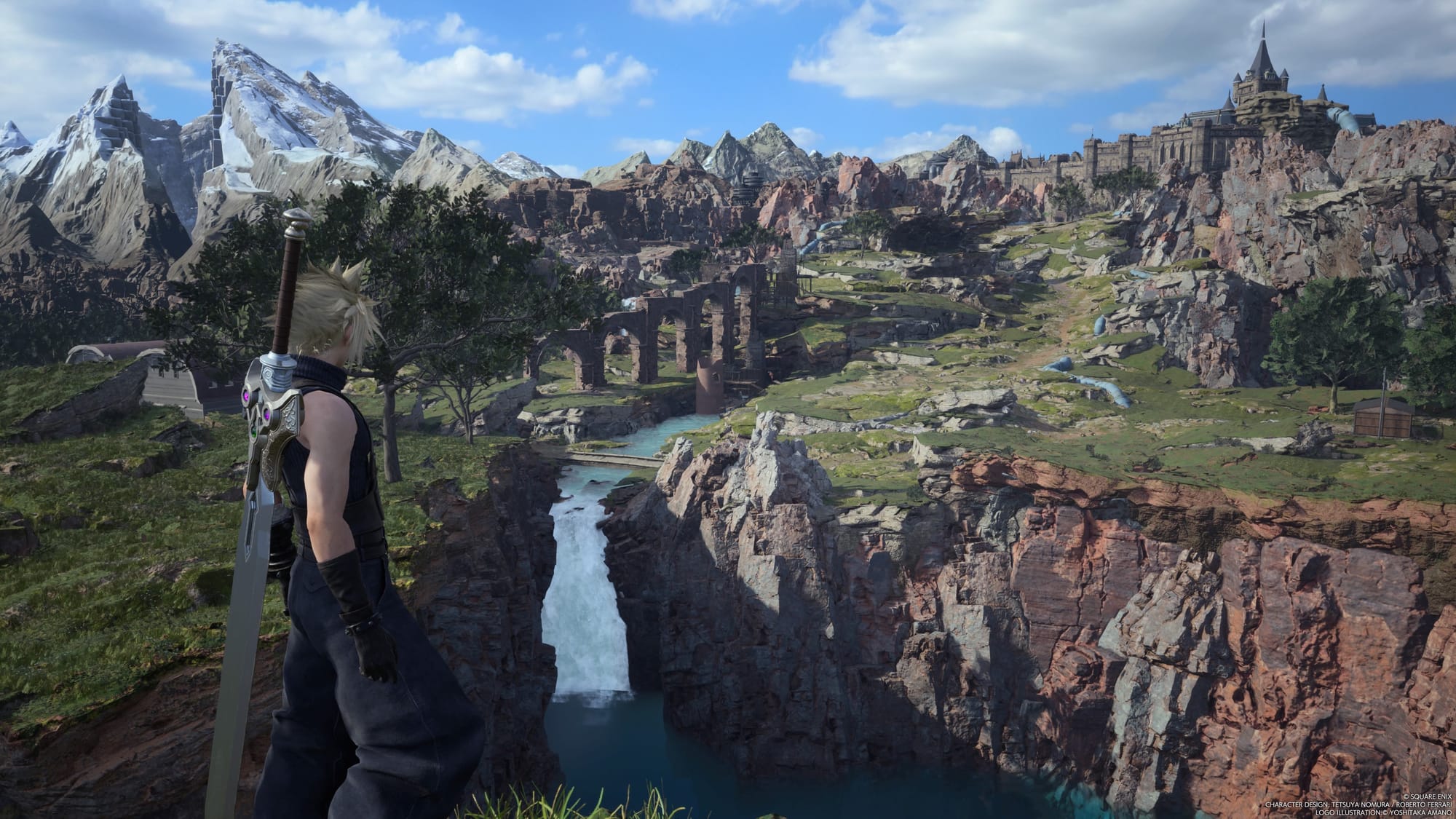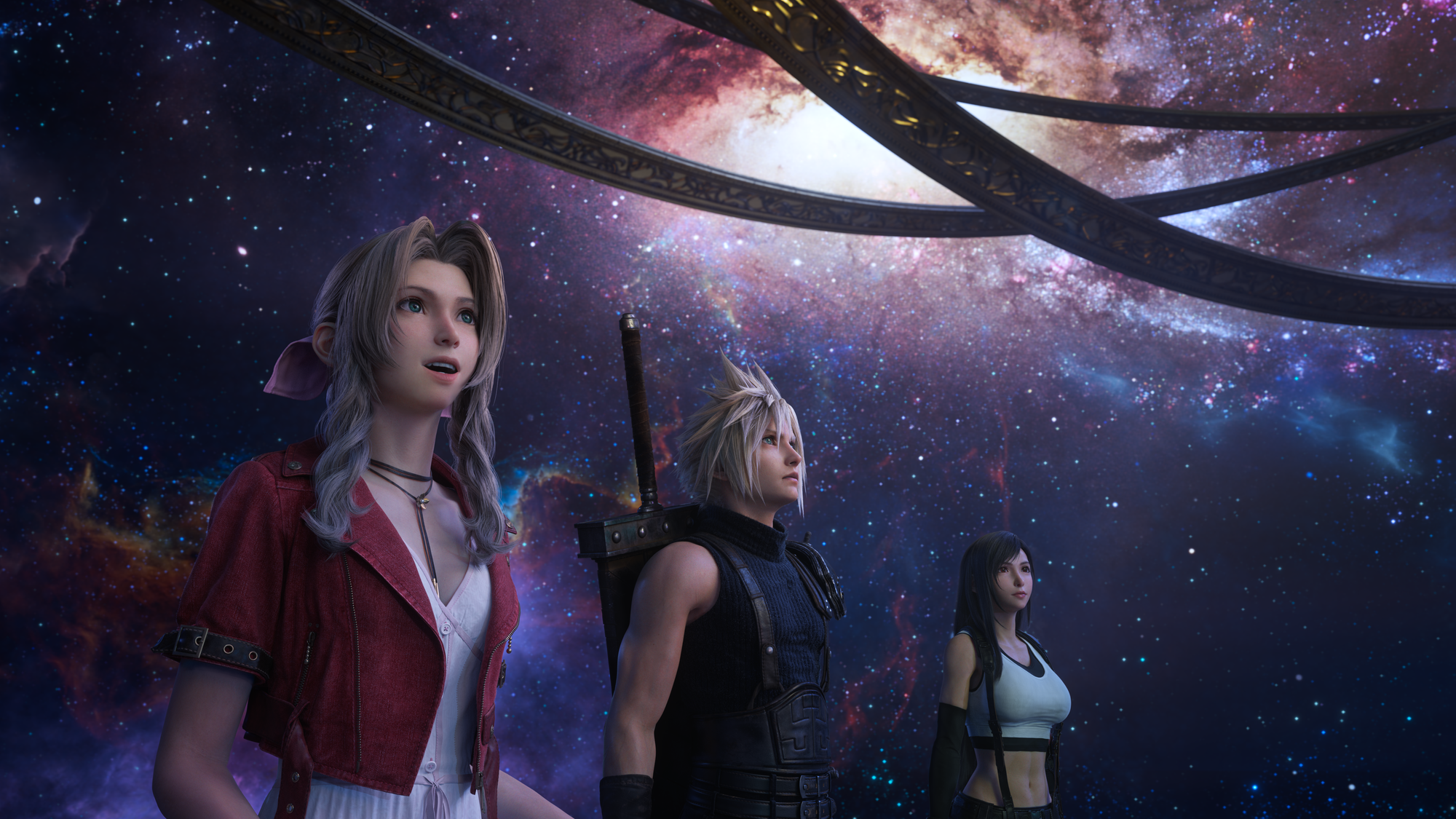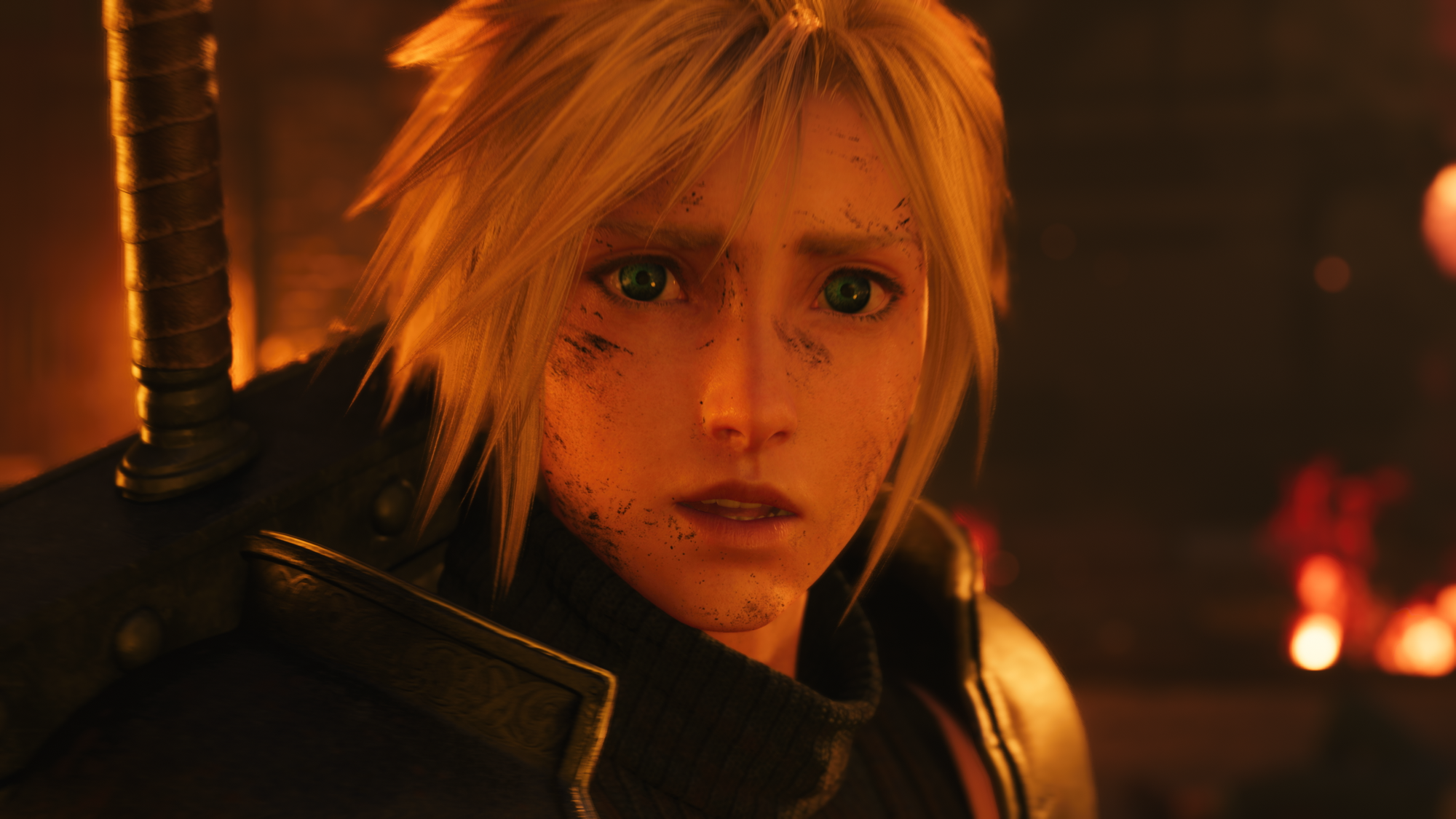This article includes a few spoilers on Rebirth’s story and the 1997 original’s plot.
In the original Final Fantasy VII, the main character Cloud Strife tells his friends the story of how he met the game’s villain, Sephiroth. Soon after, the group sets off in pursuit of Sephiroth and finds a sign of his presence: an enormous snake, run through by the jagged point of a broken tree trunk, blood smeared over its scales and its head lolling backward in death. Earlier, this same hulking serpent was so overwhelmingly powerful that the heroes could only run from it. One of the party looks up at its towering final repose and asks, “Did Sephiroth … do this?” Lightning crashes. The sense of menace is operatic in scale.
In the second part of the Final Fantasy VII remake series, this year’s Rebirth, the scene plays out differently. Cloud and his friends encounter the giant snake and battle with it as part of a prolonged action sequence. It has a manageable health bar and an elemental weakness, but Cloud nearly drowns in the swamp at the end of the battle. He’s saved from death as part of a reality-bending scene where Sephiroth appears. When Cloud comes to, the snake is again stabbed through the neck and its giant body is looped around a tree like a reptilian pretzel. There are no lightning crashes or sense of understated terror. In the service of expanding and complicating a small moment from the 1997 source into something larger—grander—we see every moment of what was once implied. It’s hard to fear Sephiroth when he won’t disappear for long.
Here, and throughout, Rebirth is very much the sequel to 2020’s Remake, enlarging its design ethos so that one-third of the original becomes a sprawling, nearly 100-hour epic. The plodding sequences injected into the first installment are blown up into dozens of hours of open-world wandering and checklist completion; short sequences and mini-games that passed by in a blink back in 1997 are stretched like taffy into lengthy distractions; most importantly, the plot is still as concentrated on metatextual maneuvering as its predecessor.
The first part of the in-progress remake trilogy made its storytelling priorities clear toward its conclusion. Zack Fair, one-time boyfriend of mystical flower girl Aerith Gainsborough—and a prototype for the psychologically destroyed Cloud’s identity when the story begins—was shown to have survived what was his death in the original material. Strange, fate-manipulating ghosts called Whispers swirled like storm clouds around characters who threatened to deviate from expectations by dying or surviving established plot beats. By the time credits rolled, creator Square Enix had made a surprising statement of intent for the project’s future: nothing that happened in the ’97 game should be considered a given when it comes to the retelling.

Rebirth continues in this vein. Its plot pulls out loose story threads big and small, unspooling them into a confusion of new directions and complications. As with the prolonged snake murder scene, little moments become entire chapters filled with new characters, new bosses to fight, and a rural expanse that trades in the original’s wide-open spaces and random battles for dense, detailed canyons, jungles, and forests dotted with items to collect and side objective map icons to clear.
The move from the PlayStation original’s primitive, understated open world to a modern, highly detailed, and time-devouring one is mirrored in the way the story is retold through both expansion and convolution.
The plot covered by Rebirth was, in the original game, a pretty straightforward slice of the overall story. It portrayed Sephiroth and Cloud’s intertwined past, the former’s evil plot to destroy the planet to transcend to godhood, and Aerith’s death once the heroes managed to temporarily catch up to the villain at a hidden temple.
The broad strokes remain the same in Rebirth, but this time, Cloud and his friends are heading inexorably toward a confrontation that the game knows we know will end with Aerith fatally stabbed by Sephiroth. Except that scenes of alternate realities are peppered throughout Rebirth’s journey toward this destination, teasing constantly that the tragedy we’re expecting may not need to be repeated. The characters bring up predestination constantly, musing on the vagaries of fate and their freedom to defy it like early Calvinists coming to grips with a new worldview. They are, as Rebirth’s creator understands, ciphers for the questions we’re asking ourselves now that the plot is capable of flying off in new directions. Maybe this time, Aerith doesn’t need to die.
This approach makes Rebirth, like Remake before it, a clever game—and far more fascinating than a largely faithful remake would’ve been. At the same time, though, its focus on defying expectations moves its priorities from impactful storytelling to forming a dialog with its audience’s memory. The result is something that operates more on the level of the brain than the heart, which is sometimes gratifying but ultimately works to dull what emotional power the original game holds.
Final Fantasy VII is, at its core, a story about a crisis of identity. Cloud spends much of the game presenting himself as a strong, powerful, stoic soldier. What we learn, via the twists of a plot involving clones and amnesia, is that he has been unsuccessfully pretending to be Zack, a dead friend who achieved the kind of masculine, martial prowess Cloud desires for himself. In the end, forced to confront his delusions, he makes peace with his fractured psyche by fighting for the good of the world and for others against Sephiroth, his former hero, whose own sense of alienation led him to become a self-obsessed, violent monster.
Because the truth of Cloud's background is revealed, bit by bit, through surprising plot reveals and Fight Club-style revelations about unreliable narration, the player is wrong-footed and confused about the nature of Final Fantasy VII's reality up until its final scenes. The issue with introducing metatextual doubt to a story of this kind is that it puts a hat on a hat, coupling a character’s unreliable understanding of reality with the plot doing the same. The confusion multiplies. The point is diluted.

There’s an argument to be made that the fractured “reality” of the remake games is a trick meant not just to break open our understanding of a “set in stone” story but to reflect the splintered psychology and scattered sense of self that torments Cloud. There’s something to be said for this kind of reading, but, ultimately, these nesting convolutions end up blunting the portrayal of real fear and sorrow necessary for us to care about Cloud and friends’ struggle in the first place.
The player ends up investing more in how the cast, like chess pieces on a board, can avoid their reconfigured fate rather than how fate shapes them. The reconfigured telling distracts, too, in its acknowledgment of the text’s “proper” outcome. This is clear in the lead-up to Rebirth’s conclusion, which teases the player with endless scenes dwelling on Aerith’s goodness and the love her recently made friends have begun to feel for her. The tendency to expand also means that the stab of loss depicted in the source material is lost. Without saying how the game’s climax arrives exactly, it’s enough to note that the original’s act of surprising violence, shocking even in chunky polygonal form, is extended into a sequence that lasts roughly the length of a feature film.
Worse, the emotional impact of these scenes is softened by having to consider reality-bending factors that draw the player’s attention away from what they’re witnessing on screen. When a character may or may not be dead because metaphysical agents could swoop in to reverse what we’ve seen, it’s hard to feel much beyond simple curiosity over what, ideally, would hit emotionally rather than intellectually. (In the original game, for instance, Sephiroth begins monologuing about his evil plans after killing Aerith. Cloud, overwhelmed with loss, interrupts by telling him to “shut up” as he mourns something more important.)

Behind all of this, too, is the assumption that those who come to Rebirth in 2024 know and love the original Final Fantasy VII enough to play along with its winking retelling. Anyone who doesn’t have a degree of reverence for the ‘97 game will have trouble seeing why it self-mythologizes to the extent that what seem like throwaway subplots become multi-hour diversions—or why the spotlight seems to shine so brightly, and with such maudlin effect, on Aerith throughout the latter half of the game. At many points, Rebirth is not so much coherent drama as it is an exegesis of a text assumed to be of the greatest importance. The implication is that the player will supply their own emotional memory. Without it, the drama falls flat. The price of entry is existing devotion: the big-budget video game for the believers only.
There’s still plenty to admire in Rebirth’s approach to remakes, like the way it expands on cursory characters—the robot cat Cait Sith, most notably—to give them a more natural place in the story, or the continual emphasis on Cloud’s psychological torment, which refuses to move out of focus for long. In this and other ways, Rebirth cements the remakes as fascinating cultural objects. But it also becomes hard to ignore that these are games that prize commentary and self-examination over the pleasures of a good, emotionally resonant story told as well as it can be.
Just as the imagery of a giant snake, slaughtered off-screen, can’t be allowed to speak for itself without showing its killer in full, disarming light, so, too, go many other opportunities for the kind of dramatic clarity that comes from understatement.
